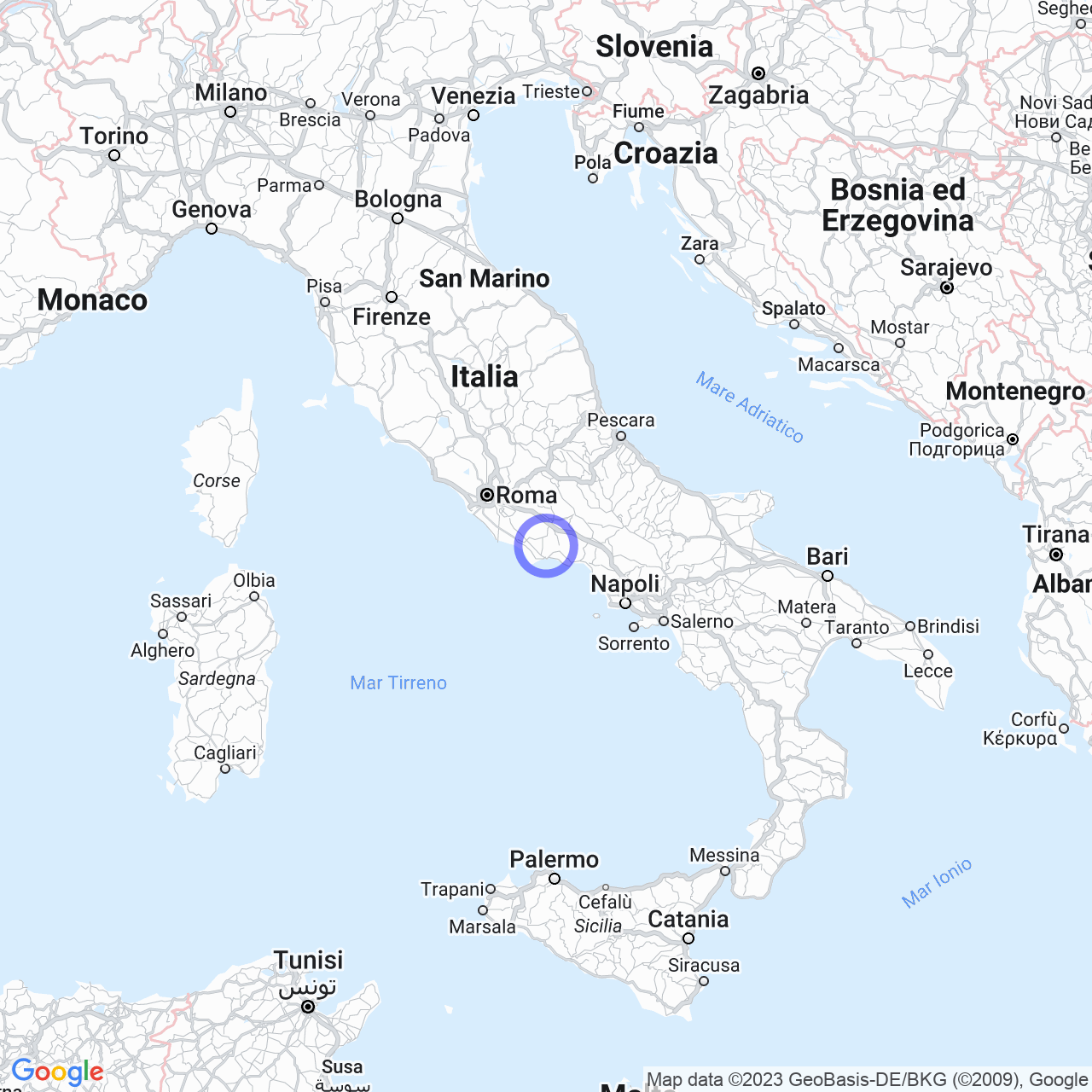Sonnino
Good morning, Sonnino!
Sonnino is a municipality in the province of Latina in Lazio, with a population of 7,346 inhabitants. The town is located on the Sant'Angelo Hill in the Ausoni Mountains. The flat area of Sonnino Scalo, Capocroce and Frasso is crossed by the Amaseno River. The climate is classified as zone D, with 1,865 GR/G.
How Sonnino got its name
The name of the town, Sonnino, is believed to derive from the Latin term ''sommum,'' meaning ''summit,'' referring to the position of the medieval village built on the top of Sant'Angelo Hill. The name is usually indicated as ''Somninum,'' ''Sonninum, Sompninum, Somnineum, Sumninum and Castrum Somneni''. There is also a legend that the city's name comes from the name of a resident from the ninth century, Antonio Salvatori, who always answered with the enigmatic phrase "So' Nino" when someone asked for his name.

Discovering the history of Sonnino
The first historical document mentioning Sonnino is a papal bull from Pope Silvester II dating back to 999. Some historians believe that the town dates back to the eighth century, founded by citizens of Priverno fleeing from Saracen invasions. However, other historians suggest that the town has even older origins, dating back to pre-Roman times when the area was inhabited by the Volsci. During the early Middle Ages, the entire communal area was intensely populated, as evidenced by the numerous archaeological finds.
Attractions in Sonnino
The historic center of Sonnino, with its beautiful medieval architecture, offers many sites of interest to visit. The Church of San Marco Evangelista, located on the top of Sant'Angelo Hill, is one of the most important monuments in Sonnino. On the same hill, there is also the Church of San Gaspare del Bufalo and the Church of Madonna delle Grazie. The church of San Gaspare is known for containing the saint's reliquary, while the Church of Madonna delle Grazie is famous for the traditional procession held every year.
In addition to the churches, there are also many archaeological sites to explore. One of the most important is the Sonnino Castle, dating back to the 14th century. Its tower offers a breathtaking panoramic view of the town and the surrounding valley. Another important site is the Sanctuary of Santa Maria delle Grazie al Frasso, dating back to the 12th century and housing frescoes and works of art.
Events and Celebrations
Sonnino celebrates various events and festivities throughout the year. The most important is the feast of the patron Saint, San Marco Evangelista, held on April 25th. The celebration includes a procession and an offering of gifts to the Church. Another important celebration is that of the patron Saint of Frasso, San Gaspare del Bufalo, held on October 21st and includes a procession and a market.
Traditional Food
The cuisine of Sonnino is famous for the production of olive oil and wine. Some traditional culinary specialties include pasta alla carbonara, made with eggs, guanciale, pepper and pecorino romano cheese, and the walnut cake, a delicious cake made with walnuts, honey, and puff pastry.
Conclusion
Overall, Sonnino is a beautiful town located in the heart of Lazio, with a significant cultural and historical heritage. Its position on top of Sant'Angelo Hill offers breathtaking views of the surrounding valley. With its churches, archaeological sites, and culinary specialties, Sonnino is a place to visit to discover the beauty and history of Italy.
